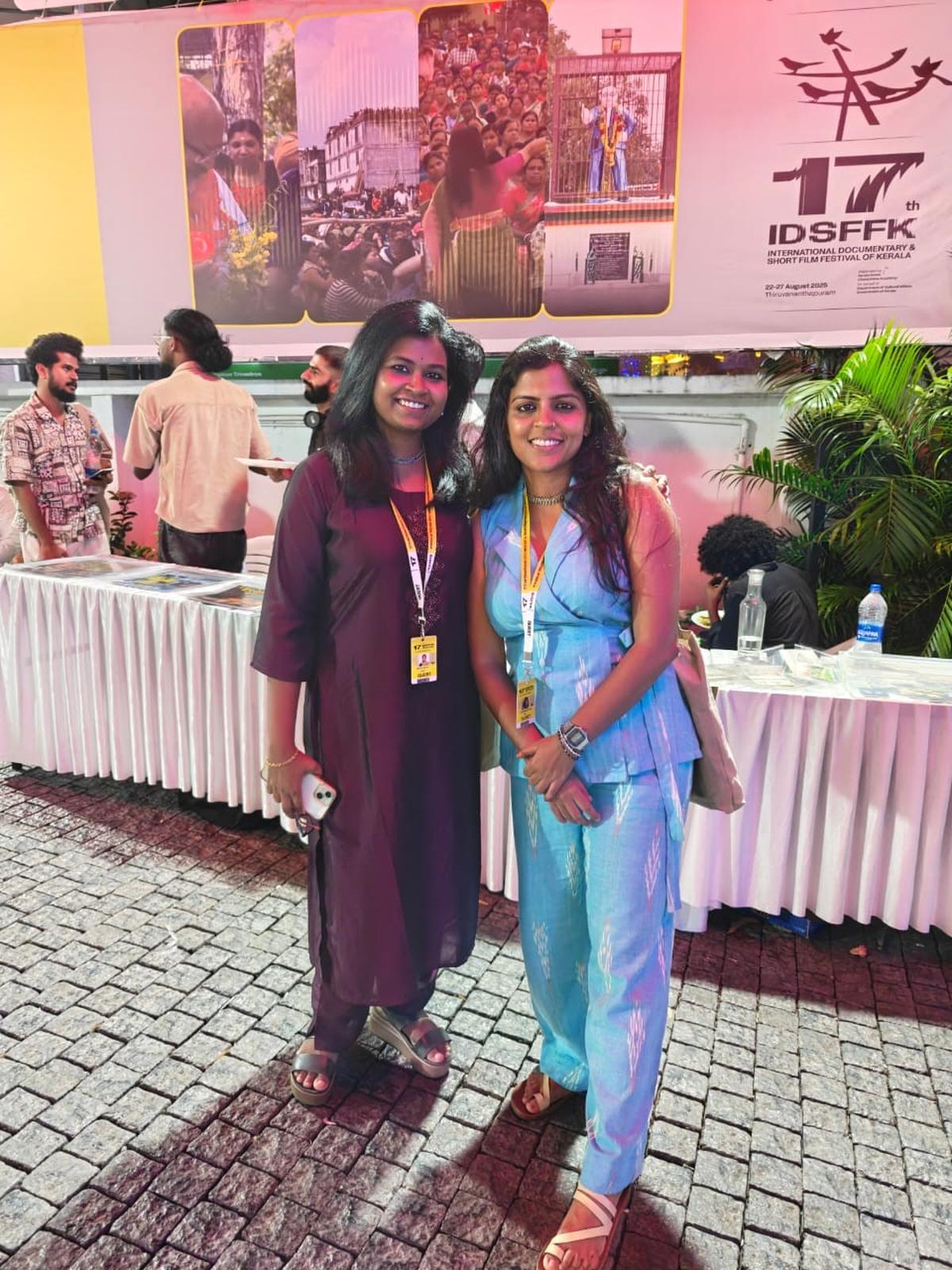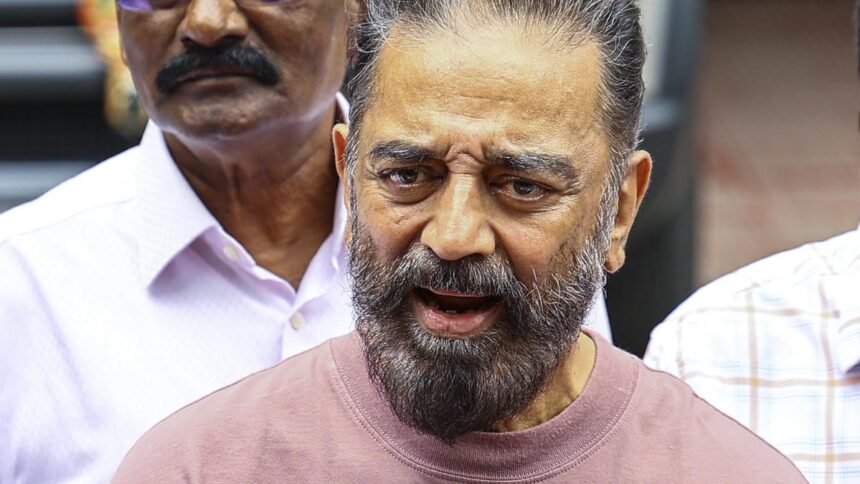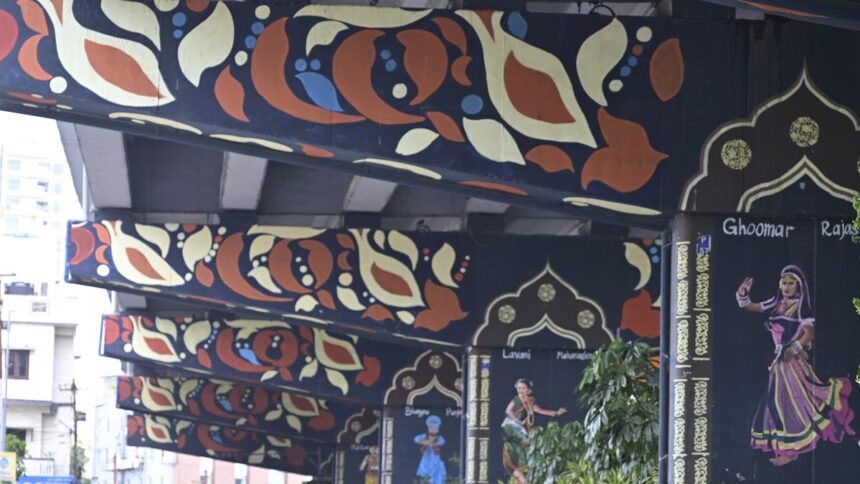One of the initial sequences of Namathu Chinnam? (Our symbol is?) is set in Puthuvalasal village in Pudukottai district, where the residents have decided to boycott the 2024 Lok Sabha elections, following the absence of any action to improve their lives, such as transportation and access to clean drinking water.
A young resident takes a big gulp from a bottle of discoloured water he had just drawn from a manual pump while describing the clarity of the water, at another village inhabited by upper-caste dwellers.
A documentary about elections that begins with a Dalit village that shuns them is justified in its irony, according to the 51-minute Tamil documentary directed by journalist Greeshma Kuthar and academic Manju Priya K.

Greeshma Kuthar and Manju Priya K
| Photo Credit:
SPECIAL ARRANGEMENT
Namathu Chinnam?, shot across Tamil Nadu in the days leading up to the 2024 Lok Sabha Elections, was premiered at the 17th International Documentary and Short Film Festival of Kerala (IDSFFK) as part of Election Diaries 2024.
The documentary, produced by The Centre for Modern Indian Studies (CeMIS), further explores the manifestation of caste into cultural capital in Dravidian politics.

“Cultural nationalism is something I have been reporting on a lot as a journalist,” says Greeshma, who has extensively covered politics in different parts of the country, during an interview after the premiere.
“The discussion over the cultural capital of the Brahmins is popular. Over the past few decades, the cultural capital of the intermediary castes is slowly increasing, with Dravida parties campaigning around it,” says Manju, pointing out the homogenisation of problems faced by people in Tamil Nadu by merely raising it as a linguistic issue.

Udhayanidhi Stalin during the 2024 Lok Sabha election campaign
| Photo Credit:
SPECIAL ARRANGEMENT
“Every time someone wants to make a film on caste, the only task is to go to someone who has faced caste discrimination and ask them ‘what happened’ and ‘how are you feeling’. We wanted to put the camera in front of someone from a dominant caste at the centre of accumulation of caste capital,” says Greeshma.
The duo traces this dichotomy through the emphasis on two art forms, Parai and Valli Kummi. The former is practised by Dalits and the latter by the land-owning Gounder caste, who belong to the Other Backward Classes (OBC) category.

The traditional art form involves playing the drum called parai, made with wood and a stretched animal membrane.
| Photo Credit:
SPECIAL ARRANGEMENT
Namathu Chinnam? explores the gradually increasing support for Valli Kummi, a narrative dance performance telling the story of the goddess Valli. It has been accused of accumulating cultural capital, with parties neglecting its casteist nuances, says the makers.
“For instance, they make young girls take an oath that they wouldn’t marry outside their caste,” says Greeshma alleging that these actions go unchecked due to the community’s importance as a significant vote bank in the state.

Manju says, “All this is done in the name of preserving culture and returning to their roots.”
Simultaneously, Parai artists are exploited and underpaid for their work. The traditional art form involves playing the parai, a traditional drum crafted from wood and stretched animal skin.
“The political parties in Tamil Nadu are inclined to protect a dominant caste culture,” says Manju, illustrating how the film argues that caste identity is invoked or overlooked depending on the electoral context. For example, she cites the existence of Ambedkar only as a caste icon whose identity is emphasised during elections.
The film has a powerful sequence of a caged Ambedkar statue at Ramanathapuram, the site of some of the most violent caste crimes in the state. The footage shows politicians observing Ambedkar Jayanthi on April 14, followed by a retired Dalit headmaster saying, “Only when Babasaheb is accepted by everyone, the cage will vanish.”
Changing definitions
The film shows the recent use of Ram or Ramar as a symbol in Tamil Nadu. It also looks at how other deities, such as Murugan and Meenakshi, are evoked by the Bharatiya Janata Party, creating more “icons rooted in Tamil Nadu”.
The makers explore the presence of female candidates in the election. In one of the sequences, a female candidate was prompted about what to say during election campaigns. “We want women leaders to emerge organically and not as tokens,” says Manju.
Published – August 26, 2025 11:45 pm IST























